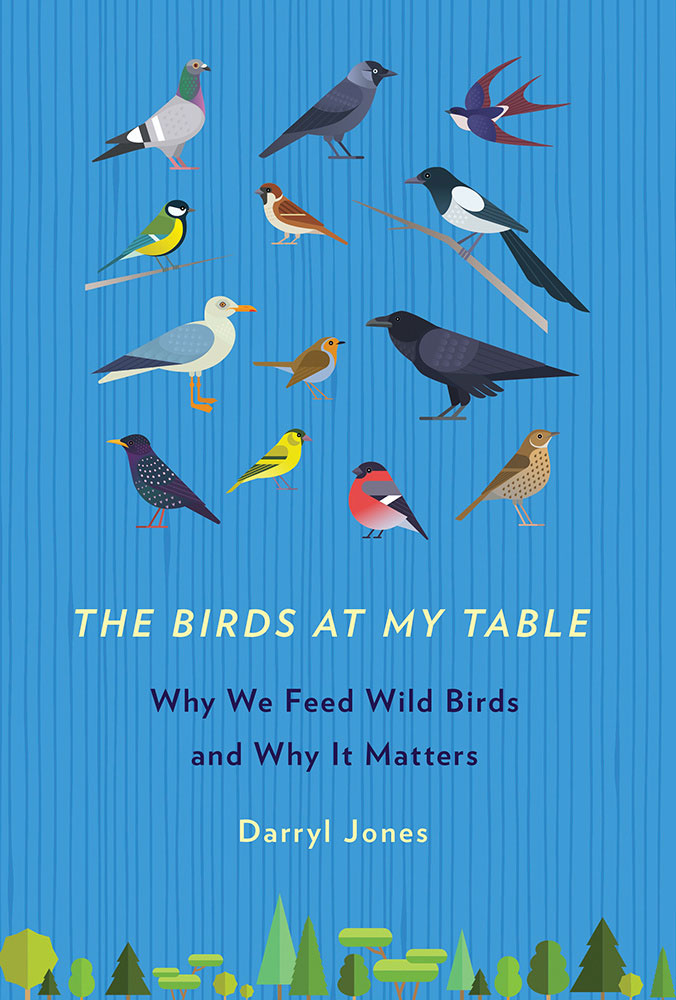Bird feeders are a common sight in the yards of many neighborhoods. Their ubiquity might suggest that they are beneficial to birds. But Darryl Jones’s new book, The Birds at My Table, shows that’s not necessarily true. Taking readers through the history of bird feeding and what we know about its impacts, he makes the case that just because we have a habit of feeding birds, that doesn’t mean it’s always in their best interest.
According to Jones, the history of widespread bird feeding dates back more than 150 years. Key milestones include the bird-protection movement in the US and the UK in the second half of the nineteenth century, which made it fashionable to feed wild birds during harsh winters; advocacy for year-round feeding starting in the 1950s; and the commercial cultivation of oil-rich black sunflower seeds in the 1970s, which are extremely popular among many bird populations.
The bird-seed industry exploded in the 1980s, and is now a massive business. Globally, it’s estimated to be worth $5 to $6 billion, and it represents an enormous additional food source for birds. Yet there’s been surprisingly little research on the impact such abundant human-distributed food has on the birds that are eating it. As Jones writes, “the move to all-year feeding in North America seemed aligned with the public’s willingness to try new products, rather than needing to be convinced by careful arguments in support of such a change.”

Jones usefully compiles what research does exist on the subject. Some evidence suggests positive or at least neutral outcomes for birds: For instance, despite the large quantity of supplementary food, birds are still largely relying on natural supplies, particularly insects, to feed their young. And in areas with extreme weather, supplementary feeding can be critical to survival. This seems to be the case for chickadees wintering in Wisconsin.
The most interesting chapter in the book, “Feeding for a Purpose,” discusses supplementary feeding programs with a conservation focus. Here, Jones describes efforts to support declining bird species like the hihi of New Zealand, the only bird that copulates face-to-face. The hihi has been nearly extinguished by nonnative mammalian predators, and is now found only on small islands without mammals. The presence of bird feeders in these habitats has resulted in production of more eggs, and more birds fledged.
While the hihi is a clear success story, results for other species are mixed. Take the kākāpō, another New Zealand bird vulnerable to mammalian predators. Supplementary food has increased the kākāpō’s mating and egg laying, but has not necessarily led to higher numbers of this large, flightless parrot. In fact, it seems that the extra food has led to obesity and apathy about breeding among certain females.
Spread of disease is another concern. Bird feeders concentrate bird populations, and put large numbers of birds into direct contact with the same feeding source. This means that diseases can spread much more quickly via feeders than they would naturally, as happened with the rapid spread of house finch conjunctivitis across North America in the mid-1990s. At the same time, a reliable supply of high-quality food can crucially strengthen birds during times of illness.
The Birds at My Table isn’t the most compelling read. The descriptions can be dry, and the attention devoted to research methodology is unlikely to engage general readers. Still, Jones’s passion shines through, and the book ultimately succeeds at making its main point: that bird feeding is more about humans than about birds. This becomes particularly clear through the words of an interviewee named Jim who feeds robins in the Welsh mountains. “The robins are my most reliable friends these days,” Jim states quietly. “I don’t know what I would do without them.”
There’s something moving about this image, and more generally about the human desire to provide sustenance to our feathered friends. Given these bonds, bird feeding is likely here to stay. But birds would benefit from humans asking more questions about these practices: how much food to provide, what kind, and when. Providing food to birds is a pleasure, but not one without responsibility.
We don’t have a paywall because, as a nonprofit publication, our mission is to inform, educate and inspire action to protect our living world. Which is why we rely on readers like you for support. If you believe in the work we do, please consider making a tax-deductible year-end donation to our Green Journalism Fund.
DonateGet four issues of the magazine at the discounted rate of $20.